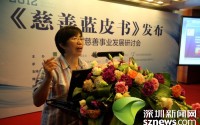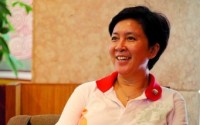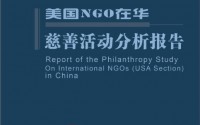26 Jul 2012
UBS gathered 200 participants for Art of Giving Conference in Beijing
On June 22, 2012, UBS held its first Art of Giving Conference in Beijing, attended by 200 participants, including philanthropists, social entrepreneurs and leaders from social organizations around the globe. The conference featured a series of presentations and panel discussions on philanthropic trends in Asia, best practices and experiences shared by philanthropists and prominent thinkers in the field. Some of the presenters were:
- Hu JinXing, Founder, Shanghai ZengAi Foundation,
- Cao DeWang, President, FuYao Group
- Yang Lan, Founder and Chairman, Sun Culture Foundation
- Li YaPeng, Founder, Smile Angel Foundation
- Xu YongGuang, Chairman, Narada Foundation
- Mathew Bishop, Editor, The Economist; Author, Philanthrocapitalism
According to a UBS press release, UBS has seen a strong growth in philanthropy in Asia in the last twenty years. Although philanthropy has a long history in Asia, it’s not done in a systematic or strategic way. So UBS established a global platform in 2004 for passionate philanthropists to share experiences and best practices. This conference in Beijing was part of those efforts, as well as an attempt to provide one-stop service to their clients.
[space]Cao DeWang, who made a record high donation of $573 million in 2011 with FuYao stock to found HeRen Foundation and was ranked as the Top Philanthropist for 2010 and 2011, commented after the conference,”Modern philanthropy in China is still a nascent concept, with only about a decade’s development. [Chinese philanthropy] was guided mostly by moral in the past, and it’s now gradually guided by system and policy.”
Richard Marker, Co-principal of Wise Philanthropy, spoke at the conference. He sees grantmaking in 3 stages: compassionate giving, strategic giving, giving for policy advocacy and system change. He reflected in a blog post Private Philanthropy and Public Policy – Some thoughts after a visit to China,[space]
“I saw this first generation look for ways to articulate what they do, why they do it, and what they dream for their outcomes and altruism. They look, too much I would argue, at the Rockefellers and Gates for direction. But as a group, they are only now proceeding from stage one to stage two grantmaking, and asking those questions.”
[space]Observing the difference between western philanthropy and Chinese philanthropy, at the end of that article, he wrote, which I found very intriguing:
“I left there realizing that, as China moves apace to becoming the world’s leading economic driver, it will evolve a new mode of philanthropy as well. We have much to share with them about process, principles, ethics, power, and role, but we would do well to do so cautiously since our modes of solving problems may – or may not – prove inadequate as the world’s energy and economies move steadily and inextricably southward and eastward. Philanthropy, a new philanthropy, most assuredly will follow.”
[space]Prior to the conference, an open class was offered at Beijing Normal University, organized by China Institute of Social Responsibility. You may get a sense of the class from the topics presented there.
[space]References:
- Prominent Philanthropists Gather at UBS Philanthropic Conference ( News, Chinese)
- UBS Press Release on the Art of Giving Conference ( News, Chinese )
- More information on the open class at Beijing Normal University ( PDF, English )
[space]
[space]





